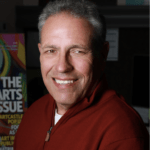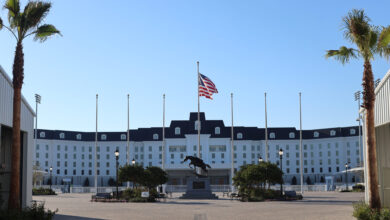
Imagine if Dr. John Gorrie had never invented air conditioning to help ease his patients’ suffering from yellow fever back in 1840s Apalachicola.
The good doctor would not be around a century later to see his invention refined, improved and mass produced. Nevertheless, Florida wouldn’t be the Florida we know today without Gorrie’s air-cooling contraption.
It would be the 1960s before home air conditioners were in wide use. I remember my family’s first a/c unit. It took four men to lift the behemoth into the hole that had been cut in the wall, which was followed by a parade of neighbors coming by to gawk and cool off. That was 1968.
Since 1970, almost 3 million people have moved to Florida each decade, causing the state to grow from about 7 million people then to 22 million today.
A funny thing happened along the way to becoming the nation’s third-largest state — the transplants now outnumber the Florida natives … by a long shot.
An analysis of Census data by the news site Stacker ranked Florida counties with the largest percentage of born-and-bred Florida residents. Of Florida’s 67 counties, Marion County ranked 38th.
The Census estimates 39 percent of Marion County residents were born in Florida. A full half of county residents were born elsewhere – 21 percent in the Northeast, 14 percent in the Midwest, 11 percent around the South and the rest from other regions of the U.S. or other countries.
People are still moving here in droves, drawn by Florida’s beauty, affordability and weather. As renowned Florida historian David Colburn once wrote, “All the state needed to achieve a near perfect environment was air conditioning and bug spray. By the mid- 1950s, both became realities.”
As those of us who have been in Florida for some or all of that half-century-long growth spurt know, unrelenting growth is a double-edged sword.
On one hand, people moving here from elsewhere typically are not very invested in our community. That’s especially true of retirees, who often live in gated communities, removed from much of the rest of the community. And besides, they figure they did their part back in Peoria or wherever they came from.
There’s also the ever-increasing traffic, the omnipresent threats to our environment, the fouling of our water resources and the pressure continuous growth puts on virtually every aspect of Marion County life.
Of course, with the bad comes the good – lots of good. Besides the economic impact new- comers have on our community – and 150 are moving in every week – they also bring cultural and social diversity to our community.
Think about Marion County and how it’s changed over the past generation. Downtown Ocala used to be a virtual ghost town. Now look at it — vibrant with bars, restaurants and stores. Marion County has an award-winning park system. It has nationally recognized arts and cultural programs, including the Appleton and Horse Fever. It has a diverse and booming economy that is becoming more so every day.
Bottom line, Florida was once the smallest, poorest, most backward state in the South.
Today, it is a growth machine that is richer, more complex and more diverse than any state in the South. Thanks largely to the newcomers that now outnumber the natives.







